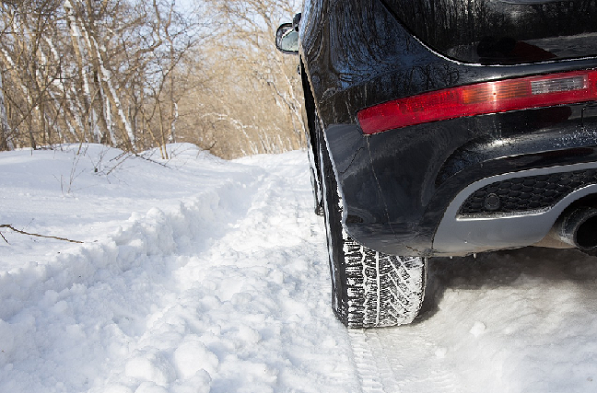While snow may be one of the highlights of winter, wet roads and ice can make for dangerous driving conditions. Cold temperatures and slick roads can wreak havoc on vehicles, making even a short commute across town a hazardous trip.
Before you step into the driver’s seat this winter, pay special attention to the safety of your vehicle and consider these tips from the experts at your local Discount Tire to ensure you’re ready to hit the road.

Install Winter Tires
Built for the cold and designed for better traction in winter conditions when temperatures drop below 45 F, winter tires can provide better traction on slippery, wet and icy roads, which can lead to striking curbs and other objects that scratch, dent and scuff wheels. Changing wheels and tires each season can ensure you have the best traction possible and protect summer or all-season wheels from the harsh effects of snow, ice and road-clearing chemicals like salt.
Keep Traction on Winter Roads
Tread depth determines a vehicle’s safe stopping distance, which is vital during winter weather when all-season tires can take an average of 110 feet to stop at 30 miles per hour compared to 81 feet in the same conditions for winter tires. You can check the tread depth by sticking a penny upside-down in a tread groove – it’s time to replace your tires if President Lincoln’s head is visible.
Check Tire Pressure
Tires lose air due to impacts and pressure of bumps and turns. Colder temperatures can also impact air pressure. For every 10-degree drop in ambient temperature, tires lose one pound of pressure (PSI). At least once a month, especially before long trips, check the pressure in your tires or stop by a Discount Tire location. Low pressure can lead to poor handling and gas mileage, excessive wear and overloading. Keep a tire pressure gauge in your vehicle to ensure each tire is filled to the manufacturer’s recommended inflation level and add air as necessary.
Update Your Wiper Blades
In cold and icy winter weather, wiper blades can stiffen and become damaged. While your wiper blades’ lifespan will vary based on where you live and the weather you deal with, experts recommend replacing them every six months. If your wiper blades squeak or leave streaks on your windshield, it’s time to replace them.
Know the Age of Your Tires
The older a tire, the higher its risk for failure. As tires age, the rubber becomes harder and brittle, losing elasticity and strength. Check the DOT number stamped on your tires’ sidewalls to see if it’s time for replacement. If you’re not sure what tires are right for your vehicle, a tool like Treadwell allows you to easily input vehicle information and driving habits to receive a personalized recommendation.
Rotate Tires Often
Regular tire rotations help ensure proper traction. Tires should be rotated every 6,000 miles, or earlier if uneven wear develops. One easy way to remember: Have your tires rotated every other time you have your oil changed.
Check for a Spare Tire
Many newer vehicles have replaced spare tires with tire inflation kits that include puncture-coating sealants and air compressors or run-flat tires. Check to see what your vehicle has and consider adding a roadside assistance plan in case you experience any issues during inclement weather.
To locate a store near you, or search for winter tires specific to your vehicle and driving habits, visit discounttire.com, where you can save up to 30% on wait times in-store, or use the mobile app.
Always check road conditions too before you travel: TripCheck
Photo courtesy of Shutterstock — Source: Discount Tire (Family Features)
